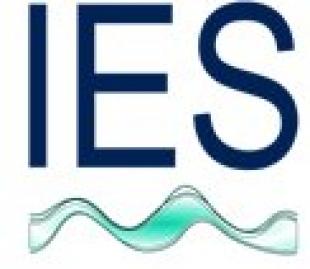Location:
Rm D/E, Alrick Building, Kings Buildings
Date:
This seminar is now finished however you can still watch it online at http://www.masts.ac.uk/masts-research/webinars/.
To view the jetstream data shown at the start of the presentation go to this link: http://earth.nullschool.net/#current/wind/isobaric/1000hPa/orthographic=-34.11,36.76,621
Abstract: Marine cloud brightening
Many informed people now accept that increases of carbon dioxide really are damaging the climate and that damage may suddenly become faster and irreversible because of burning rain forests, melting Arctic ice, fewer algae or the release of methane from permafrost. Despite political wishful thinking, the rate of carbon dioxide release is accelerating and further increases at higher rates seem very likely. Alternative solutions are needed.
We could tolerate twice present carbon dioxide levels with no temperature change if we could increase the amount of solar energy reflected back out to space by about 1.5%.
Latham has pointed out that low level clouds are quite good reflectors and their reflectivity can be increased by exploiting the well-known Twomey effect. This says that clouds with large numbers of small drops have a higher albedo than ones with a smaller number of large drops. The clouds can also have greater longevity.
Even if the relative humidity is above 100%, cloud drops cannot form without a small starting seed known as a cloud condensation nucleus. In clean marine air masses there are fewer of these nuclei, somewhere between 10 and 100 per cubic centimetre, compared with 1000 to 5000 over land. The albedo of marine stratocumulus clouds would be increased by greater numbers of nuclei. Doubling the number would increase the amount of solar energy reflected from cloud tops by over 10%.
A very small drop of sea water is an ideal cloud condensation nucleus, and will therefore readily grow to become a cloud droplet if it rises into a marine stratocumulus cloud. The new cloud droplets have an atmospheric lifetime of about one day and so must be continuously supplied. The ratio of solar energy reflected to wind energy needed for spray production is many orders of magnitude.
Spray can be produced from remotely-controlled sailing vessels drawing energy from the wind. Design work is well advanced. We would need to build about 50 new spray vessels a year, each spraying 30 kg a second and costing a few million dollars apiece to keep world temperatures steady despite present levels of carbon dioxide release. Spraying 10 cubic metres a second would cancel anthropogenic emissions since preindustrial times. Spraying 70 cubic metres a second would offset double preindustrial CO2.
Widely distributed spray sources give a slight increase in river run-off. Concentrated spray sources can almost double precipitation in some dry places and reduce it by 15% in wet regions at long distances from the spray source. Full understanding of an everywhere-to -everywhere transfer function may be achieved by the use of pseudo-random perturbations to climate models. Local tactical spraying might allow control of precipitation in either direction and might give overall benefits with regard to both drought and floods.
All the remaining engineering uncertainties would be removed by spending about $10 million. The full development programme would cost about $50 million.
The only inputs are sea water and wind so the technique is ecologically benign. Introduction is progressive and locally variable. If necessary, perhaps because of cooling from a volcanic eruption, switch-off is almost immediate.
Biography
Stephen Salter is Emeritus Professor of Engineering Design at Edinburgh University. After an apprenticeship in the aircraft industry and a degree at Cambridge he has worked on robots, energy from waves and tidal streams, desalination, traffic congestion, computer-controlled hydraulic pumps and motors, flood prevention, mine clearance, the suppression of explosions, increasing the capacity of road bridges and is now working on the design of seagoing hardware reversal of global warming by making clouds whiter. Reports of his retirement are exaggerated. He likes very short introductions.



